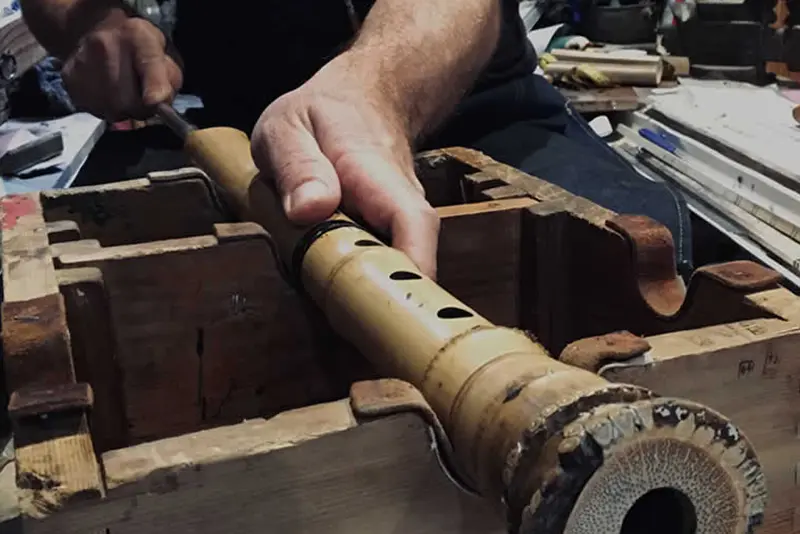
01 Oct How to Prevent and Repair Cracks in a Shakuhachi
Owning a Shakuhachi provides an enchanting experience deeply rooted in ancient Japanese culture. These traditional bamboo flutes require meticulous care due to the vulnerability of bamboo to cracking. This article focuses on preventative measures and steps to repair simple cracks in your Shakuhachi. For severe issues, consult a professional Shakuhachi repair specialist.
What is a Shakuhachi Flute?
A Shakuhachi is a Japanese bamboo flute revered for its unique sound and spiritual relevance. While it holds a rich history, the primary focus here is on the upkeep of your Shakuhachi.
Understanding Shakuhachi Components
Before addressing repairs, it’s essential to know the various parts of a Shakuhachi. Familiarity with your instrument aids in effective maintenance. Shakuhachi flutes are crafted from selected bamboo and require an understanding of the materials for proper care.
Preventing Bamboo Cracks
Bamboo is highly susceptible to cracking, especially if not stored under suitable conditions. Maintain a humidity level between 50 to 60% for optimal care. Tools to consider for humidity control are a humidifier or a dehumidifier. Protect your Shakuhachi by storing it in a case or bag, shielding it from dust and impacts. Avoid rapid temperature changes and direct sunlight exposure. After playing, wipe the instrument with a soft cloth.
Identifying and Repairing Simple Cracks
Cracks in bamboo can occur under various circumstances. Ignoring them could lead to more significant issues, such as compromised sound quality. Locate any cracks by conducting a thorough inspection of your Shakuhachi.
For repairing simple cracks:
- Prepare a workspace that is clean and well-lit.
- Gather materials: sandpaper, a small clamp, a soft cloth, and binding material.
- Locate the crack and clean the area.
- Dampen a cloth and wrap it around the crack, allowing the moisture to seep into the bamboo, which helps the material swell and close the crack.
- Use a clamp to hold the bamboo in place while it dries.
- Once dry, remove the clamp and wrap the repaired area with a binding material to provide additional support.
Maintaining the Utaguchi
The Utaguchi, or blowing edge, is one of the most sensitive parts of a Shakuhachi. Keep the Utaguchi covered with a cap when not in use. If chipping occurs, consult a professional for repairs, as improper handling can cause irreversible damage to the instrument.
Regular Maintenance
Inspect your Shakuhachi for signs of wear regularly. For the mouthpiece, use a soft brush to remove debris and prevent buildup. Different Shakuhachi models may have unique maintenance requirements, so be aware of your specific model’s needs.
Seeking Professional Assistance
When it comes to complex repairs or issues that are beyond your skill level, consult a Shakuhachi repair specialist. Shawnee Schroeder at Chikushin Shakuhachi is a reliable professional for such needs.
By adhering to these preventative measures and repair steps, you help ensure the long-term health of your Shakuhachi, enabling it to produce its captivating sounds for years to come.


